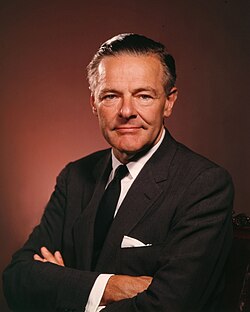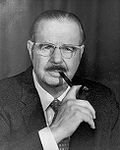| |||||||||||
| |||||||||||
| |||||||||||
This article lists those who were potential candidates for the Republican nomination for Vice President of the United States in the 1960 election. After winning the Republican presidential nomination at the 1960 Republican National Convention, incumbent Vice President Richard Nixon needed to choose a running mate. President Dwight D. Eisenhower strongly supported UN Ambassador Henry Cabot Lodge Jr. [1] Though Lodge lacked charisma as a campaigner, his foreign policy experience and stature as ambassador made him an appealing candidate. [1] However, Lodge was unpopular with the Republican right, who did not want a Northeastern moderate on the ticket. [1] Nixon also strongly considered conservative Minnesota Representative Walter Judd and moderate Kentucky Senator Thruston Morton. [2] After a closed session with Republican Party leaders, Nixon announced his choice of Lodge. [2] The Republican convention ratified Nixon's choice of Lodge. The Nixon–Lodge ticket lost the 1960 election to the Democratic ticket of Kennedy–Johnson.











